Although I’ve painted along this stretch of beach for years, I still find myself intrigued by new possibilities for richer and deeper expression in these subjects. The “hook”, the thing that continually catches my eye, is the remarkable brilliance of light and the presence of life and energy here. My mission, the “art” in this, is to relate it (this sensation/experience) to others.
This needs to be stated as much for my own benefit as yours because the challenges of outdoor painting are formidable. Losing the whole point of the painting in the struggle of making the painting is breathtakingly easy, and so I need to remind myself of my mission frequently.
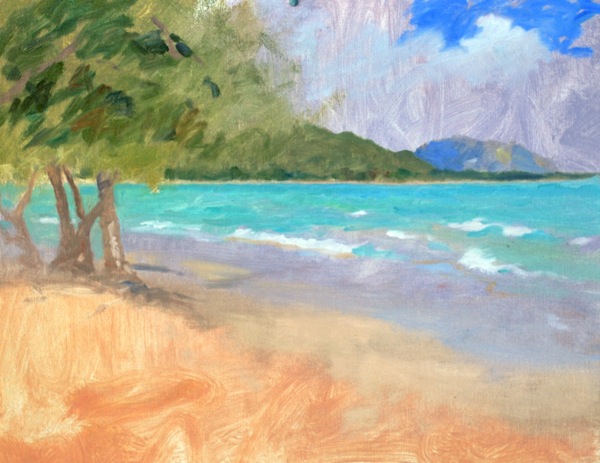
This piece began with basic pencil sketches worked out prior to actually beginning painting. It’s very important to make a plan about placement and pattern in advance. Once I begin painting, color, value and the light effect are plenty to occupy me and not the time to wonder where I’m going compositionally.
The First Session
Arriving early and setting up at the location with a 16 x 20″ white canvas, I make sure that the light on the canvas is not bothersome, that the wind is manageable, and also that my location will remain in the shade for the next 1 1/2 hours.
With my palette set up in my usual fashion, my first objective is to get my largest shapes in place. I begin by placing the horizon line and tree trunks with thin loose strokes on the white canvas. That’s a pivotal juncture in the design and the other shapes (ocean, hills, sky, and sand) are positioned in relation to them.
Using large egbert brushes and pigment slightly thinned with Gamsol I then lay-in all these masses in flat general tones, in overall color as close to nature as I can get them. This process takes an hour or more. No details. I keep the edges of masses fairly “lost” in most places.
I really try to be fresh with the brushwork ….an energetic start with large, flexible brushes can’t be a bad thing at this stage. I work the strokes in various directions, often attempting the unexpected ( like pulling the sky tones downward, the tree trunks painted with horizontal strokes “across the form”, etc.). The whites in the clouds and waves are actually greyed down a couple steps so that the actual brilliance of these highest value notes can later be built and adjusted over the grey.
Everything is kept simple and painted as freshly as possible. Although I’m seated for this painting, I work at arms length from the canvas and step back often, so that I’m always viewing the entire painting rather than focusing too much on the individual parts. Whatever redeeming qualities the final painting may eventually have are being established now.
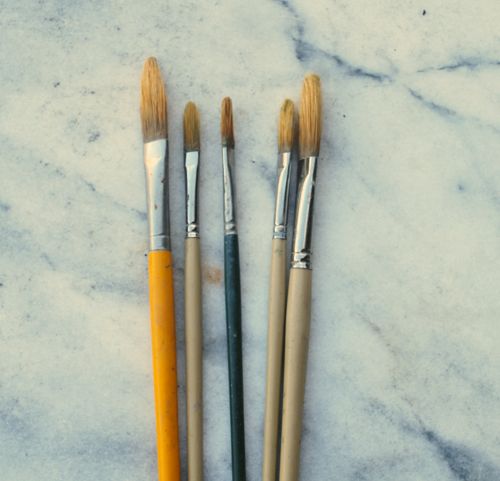
After about two hours work, the light has changed enough that I need to stop. Paintings of this sort are always a survey of the light effect, not (as in a photograph) an instant summation. As this painting progresses, the window of working time will narrow because I’ll have a better grasp of the light effect. In ensuing sittings the point will not be to add more stuff to the picture, but to select and refine relationships and beautify what nature is providing.
So, it’s a good start. I look forward to continuing the momentum tomorrow, weather permitting.
More coming soon, and thanks for joining me!

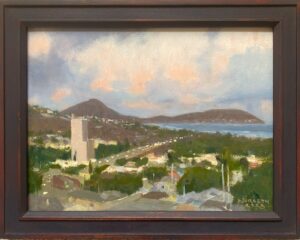
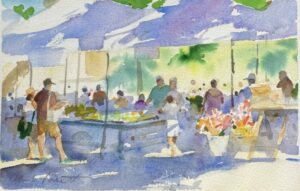
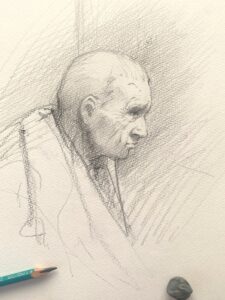
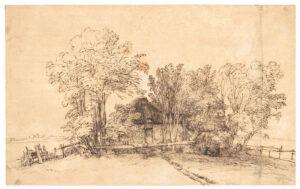
No comment yet, add your voice below!